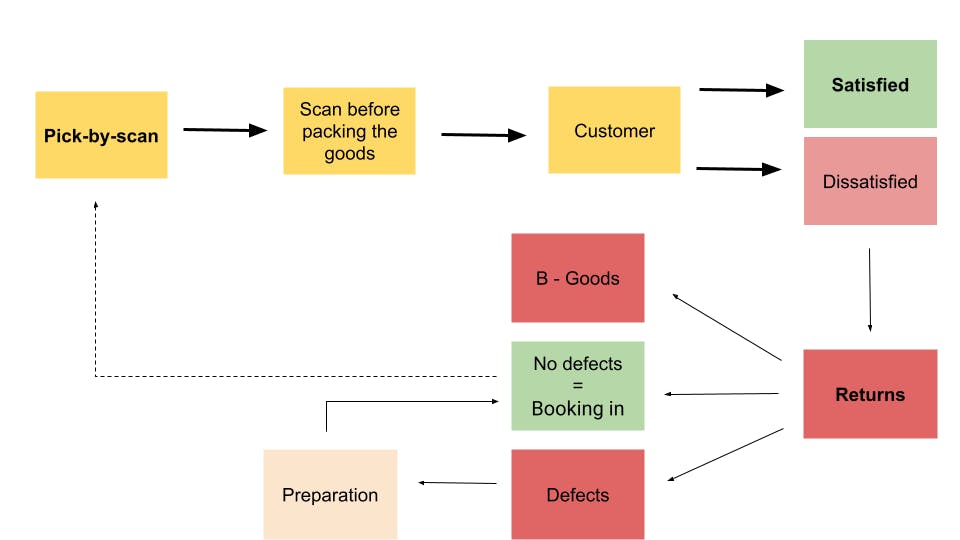
How can I optimize my returns management process?
Who hasn't experienced it? Sitting comfortably on the couch in the evening, surfing the internet with your mobile phone or laptop, and looking for new favorite pieces or a change in your wardrobe. Once you've found the right piece, it's usually just a few clicks, and you've bought it. Once the parcel is on its way to your home, joy sets in. The package arrives, and you can finally examine your new clothes. You look and try them on directly. However, you notice that one item is not the one you ordered, and another has a loose seam. Annoyingly, you now return these items.
Here, we explain how you, as a company, can prevent such incidents with the end customer and optimize your returns management process!
What Types of Returns Errors Are There Actually?
There are actually several sources of returns errors from a logistical point of view:
Type error: occurs when an item with an incorrect identification (e.g., EAN13 barcode) is added to an order because it may have been incorrectly booked into the same storage location as the actual correct item.
Quantity error: occurs when more or fewer items end up in the order than were actually intended.
Omission error - a special type of quantity error: This error is when a bin location has been skipped or forgotten during the pick, which consequently leads to a quantity error.
Condition error: occurs when items are damaged or dirty.
How can I prevent returns?
Reactive Measures
If a customer sends back items from their order, they are checked in the returns management process and examined for defects. Depending on how serious the defects are, the item is sent for reprocessing or sorted out as B-goods. The B-goods are first stored and then sold by the manufacturers in outlets, donated, or recycled. Items that do not have any defects are returned to the shelves and are available for new orders. However, it is recommended to work with logistics providers who ensure system-based traceability of the movement of these items. Further instructions on quality checks of the goods, both in the inbound, pack, and return, enable a quick response on the part of the logistics partner. In this way, unnecessary waiting times in processing can be avoided. To carry out such quality checks, the logistics service provider should provide its employees with extensive training and instruction. With these reactive measures, condition errors can be prevented.

Conclusion
It is important to ensure that the logistics provider you choose works with a technical order picking system, as this can prevent many errors and automatically lead to fewer returns, which are independent of your products.
Optimizing your returns management process doesn't take much effort. A few small and simple actions can make a big difference. Firstly, it will increase customer satisfaction, as customers can be confident that the goods they receive are the right ones and have no defects. This, in turn, will lead to customer loyalty, as customers will be happy to shop with you again and again if your processes are smooth and easy to handle, and they will remember your brand positively. To get more precise feedback from your customers about the exact reason for the return, we recommend always including a return slip where the customer can tell you exactly what they didn't like about the item. This should be filled in and returned with the returned item.
Do you have any questions about MOODJA's returns services? Connect with us via sales@moodja.com!
Copyright © 2023 MOODJA GmbH.